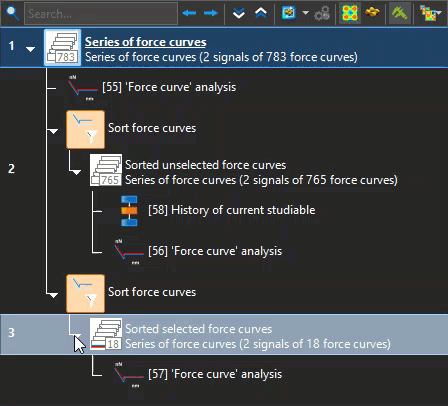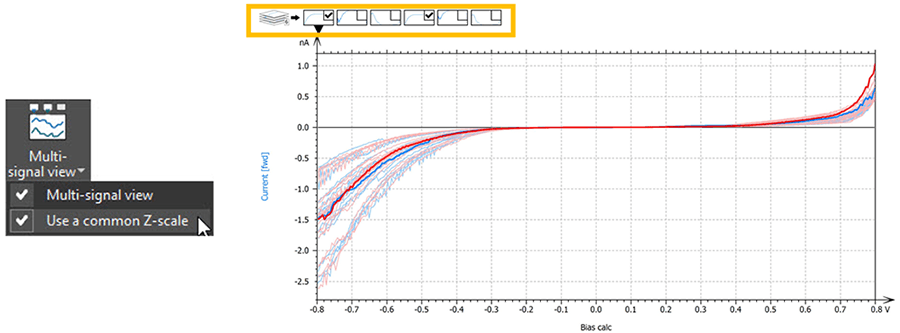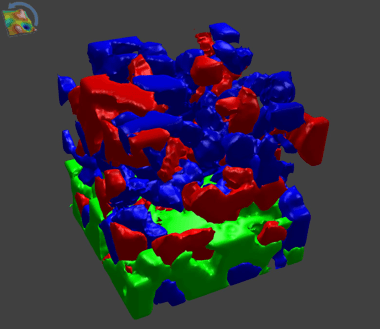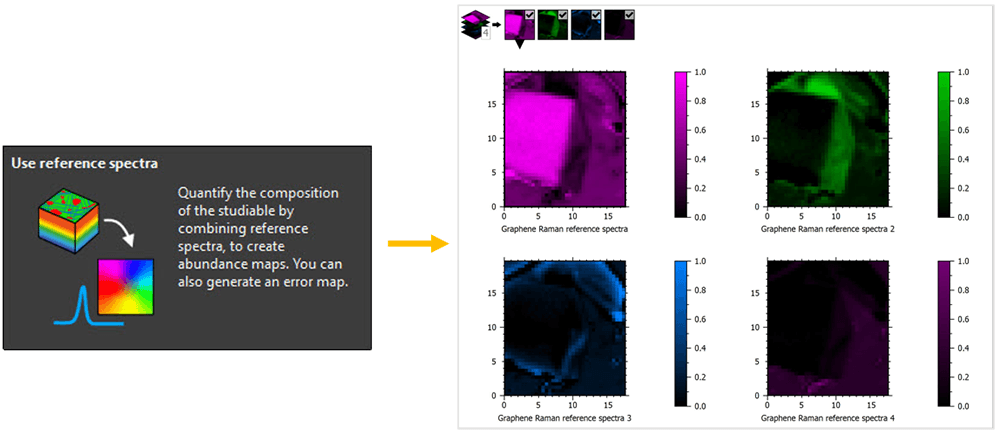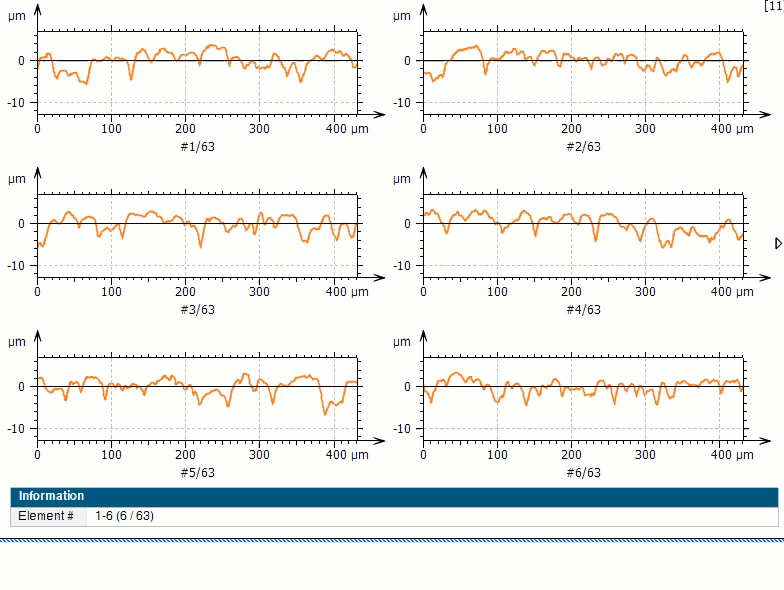With many new and improved features, Mountains® 9.3 will be on show at the Materials Research Society Fall Meeting & Exhibit in Boston, USA from November 29. The new version will also be available for download from mid-November. So what’s included in the latest edit and what are the benefits of updating? Let’s take a closer look.
- Cross-technology features
- SPM features
- SEM features
- Correlation & spectroscopy features
- Profilometry features for surfaces & profiles
- Profilometry features for Shells
Cross-technology features
Personalize how you load your data
- For users who frequently use the same analysis tools
- Save time by choosing to display data directly in your desired Study format (particle analysis, step height, histogram etc.)
- Choose whether or not to show studiables in the document (or only in the workflow)
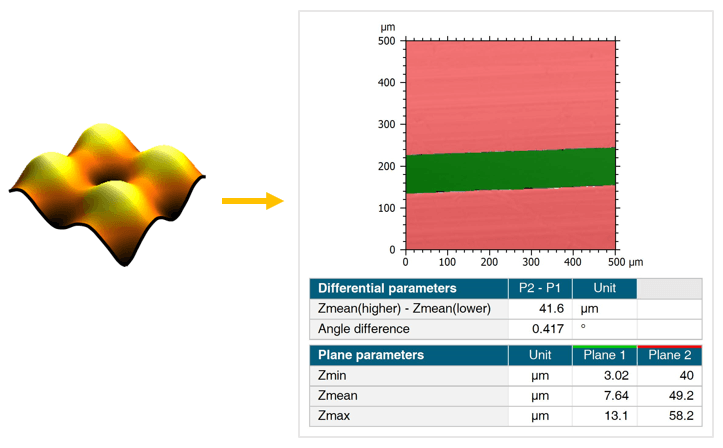
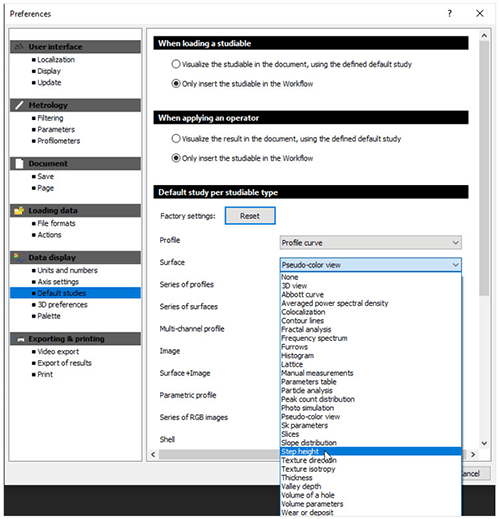
Automation features boosted
In Industry 4.0, manufacturing is highly automated and directly integrated with surface metrology.
Mountains® automation features continue to allow users to efficiently perform batch processing (in particular when integrated as a COM component).
New features:
- Use Result pickers* to manage Tolerance limits
- Better automation when working with variables
- When variable is changed, all tolerance limits are updated
- In Template mode:
- Save disk space by choosing not to save generated documents
- Manage long file names
- Access Result pickers when using Particle Analysis
- Recall values calculated elsewhere in the document and use them as thresholds for particle detection
- Allows greater flexibility in automated processes
- Improved usability of multiple substitution
*The result picker allows users to pick a numerical result in the Result Manager (generated by a study or entered in a variable) and use it as a setting.
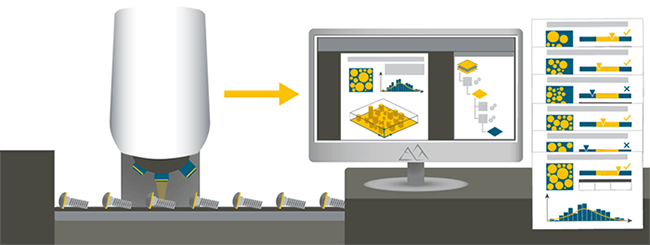
Aggregate series of results in statistical documents
- Visualize individual series values in statistical documents
- Calculate statistics on all individual results of aggregated populations
- Particle analysis: sort aggregated series based on classes
- Display all individual values in an aggregated series as control charts, histograms etc.
- Simplify post-analysis statistical processing
- Display number of valid values
- Export only valid results from Series
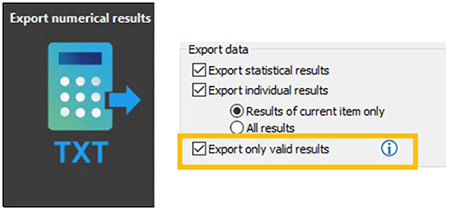
Above: Visualize and export valid results only
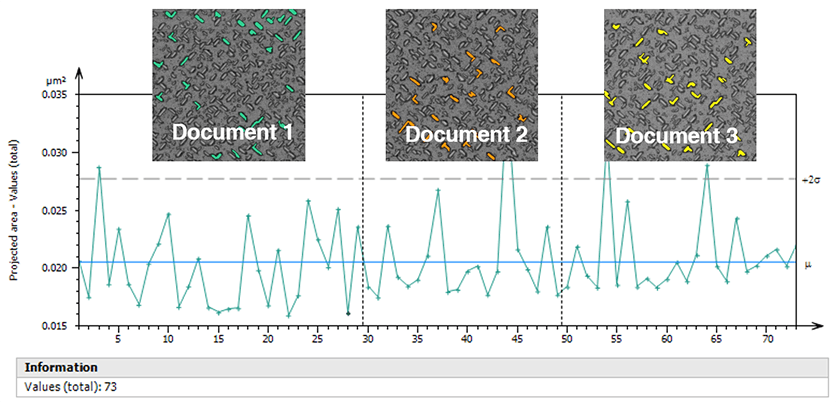
Above: Generate graphical representations of all individual results from aggregated populations
Improved tools for FFT-based analysis
- Filtering on surfaces and profiles: filter wavelengths directly (low pass, high pass, band pass & band reject), refine excluded/included frequencies more easily, visualize cursor coordinates for wavelength & angle, highlight low or high amplitude frequencies using new Z-scale option (square root, power)
- Thresholding: define included magnitude bands with new threshold slider, automation made easier

Above: New filtering options allow automatic detection of repeating patterns on surfaces with topography variations
Colocalization: improved positioning
- Access positioning methods in the first step of the Colocalization process, and modify if necessary
- Incorrect positioning warning now displays if XY offsets of datasets to be colocalized are very different
- Colocalize datasets with incompatible offsets using new “Center on background” option
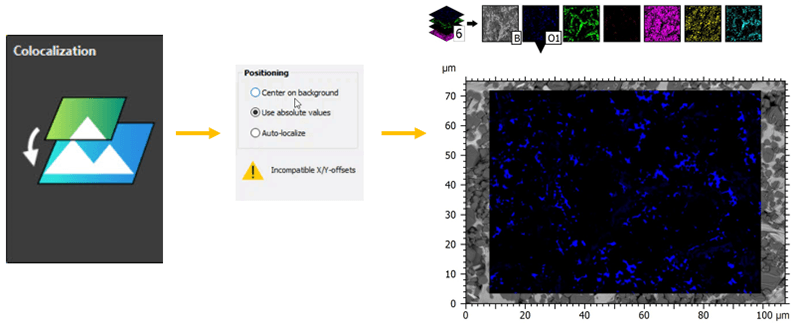
Above: Colocalization of SEM topography & EDS maps
Data courtesy of Emmanuel GUILMEAU, CRISMAT (Caen), Jean-Claude Ménard, JEOL France
New Analysis Workflow hack
- New Collapse/Expand All arrows in Workflow
- Workflow display now entirely customizable!
SPM features
Use advanced FFT to define unit cell size/geometry
- Accurately fine tune unit cell size and geometry of a surface with repeating patterns using the new “Adjust unit cell” tool
- Automatically recalculate the suggested unit cell when source studiable is modified
- Choose to display X/Y linearity errors curves
NB: The Lateral calibration Study has been renamed “Lattice and lateral calibration”.

Above: Choose unit cell from 2 FFT peaks (corresponding network is shown in real time)
Force curves: stiffness analysis & other new tools
- Analyze material stiffness and characterize resistance to deformation
- Convert a Force-Volume dataset into a Series of force-curves in order to combine and/or compare data
- Additional options for displaying and manipulating information on force curves and force volume datasets
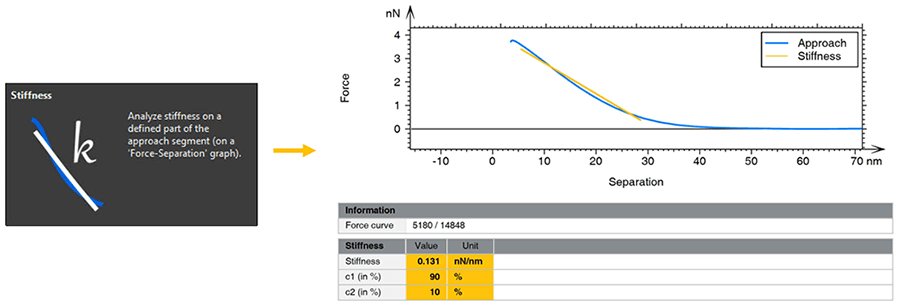
Above: New – analyze material stiffness
New tools for IV curve analysis
- Multi-signal view:
- compare several IV curves (e.g. forward/backward) simultaneously, display signals with a common Z-scale
- thumbnails have been added for easier navigation
- Cursor navigation on IV images
- New “Convert into a series” operator
Above: Multi-signal view with common Z-scale
SEM features
Analyze fiber morphology in SEM images
Feature available January 2023
- Analyze SEM images (SE & BSE modes) and optical microscopy images
- Main applications: nanofibers, electrospun fibers, natural & synthetic fibers etc.
- Calculate fiber diameter (mean, min, max, standard deviation) & mean fiber direction
- Visualize results on individual fibers and interstices interactively
- Display histogram of fiber diameters
- Adjust binarization settings to different use-cases (SE, BSE modes etc.)
- Export images and numerical results

Above: Electrospun chitosan fibers imaged by a scanning electron microscope.
Attribution 2.0 Generic (CC BY 2.0): msaustero, www.flickr.com/photos/29197937@N08/5039329442

Above: Fiber Analysis in Mountains®: distance map, segmentation image, histogram & interactive parameters table
Four-image reconstruction reloaded
- Accurately reconstruct topography of images containing objects on a flat background even if slopes > 45° (e.g. semiconductors, MEMS, microlens arrays etc.)
- Freely choose rotation angle of 4-quadrant detectors manually or let the software find the best angle (e.g. to overcome magnetic beam torsion effects)
- Colorize overlaid image layer with 3 colors (as opposed to 2 previously) to highlight details
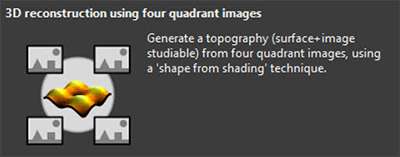
Faster loading of FIB image series as cubes
- For Multi-channel cubes generated from FIB-SEM series, loading and calculation times have been largely improved
Correlation & spectroscopy features
Improvements for Hyperspectral image visualization
- Cursor navigation (see image)
- Select any point in the image and visualize the corresponding curve
- Display coordinates of the curve and curve number
- Edit axes
- Multi-signal view
- Faster loading of large datasets

New tools for analyzing spectra
- Normalize spectra (Raman, photoluminescence, cathodoluminescence etc.)
- Equalize the importance of different spectrum curves
- Choose between different normalization methods (Max intensity, Custom zone, Standard Normal Variate (SNV) for optical spectra, Area)
- Convert Hyperspectral images into Series of spectra (e.g. to perform statistical analysis)
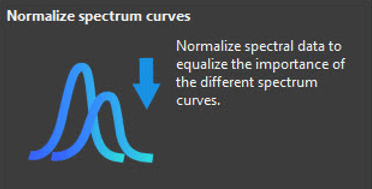

New features for creating spectral maps
- New “Use reference spectra” operator (see below)
- Quantify composition of your sample based on reference spectra (components previously extracted from data)
- Generate Multi-channel images from Hyperspectral images to improve further data processing.
Works with:- Extract components
- Create correlation maps
NB: The “Create density maps” operator has been renamed “Create correlation maps”.
Profilometry features for surfaces & profiles
Metric units in Slices analysis
- Obtain volume measurements in metric units (and not only in %) in Slices Analysis
- Also: new developed area parameter

New grid view on series of profiles
- Display all or several profiles in a series side by side
- Select number of desired columns and rows
Profilometry features for Shells
Unfold cylinders
- Unfold cylinders in the “Fit a geometric form” operator
- Generate a flat shell representing the unrolled surface of the cylinder
- Gain access to analysis features to characterize cylinder surface (surface texture parameters etc.)

More options for Shells containing color
- Shell colors are now propagated in the Remesh, Rotation and Extract area operators
- Image layers can be used as Shell color attributes when converting a Surface+Image studiable


Above: Image layers are conserved as color attributes when converting to Shell studiable format
How to update
A full list of the changes and bug fixes published in this release is available in the release notes.
Access to this latest release is included in the Mountains® Software Maintenance Plan (SMP). Please visit our Software Updates page.
To find out more about SMP options, please contact sales@digitalsurf.revelateur.fr or visit this page.
